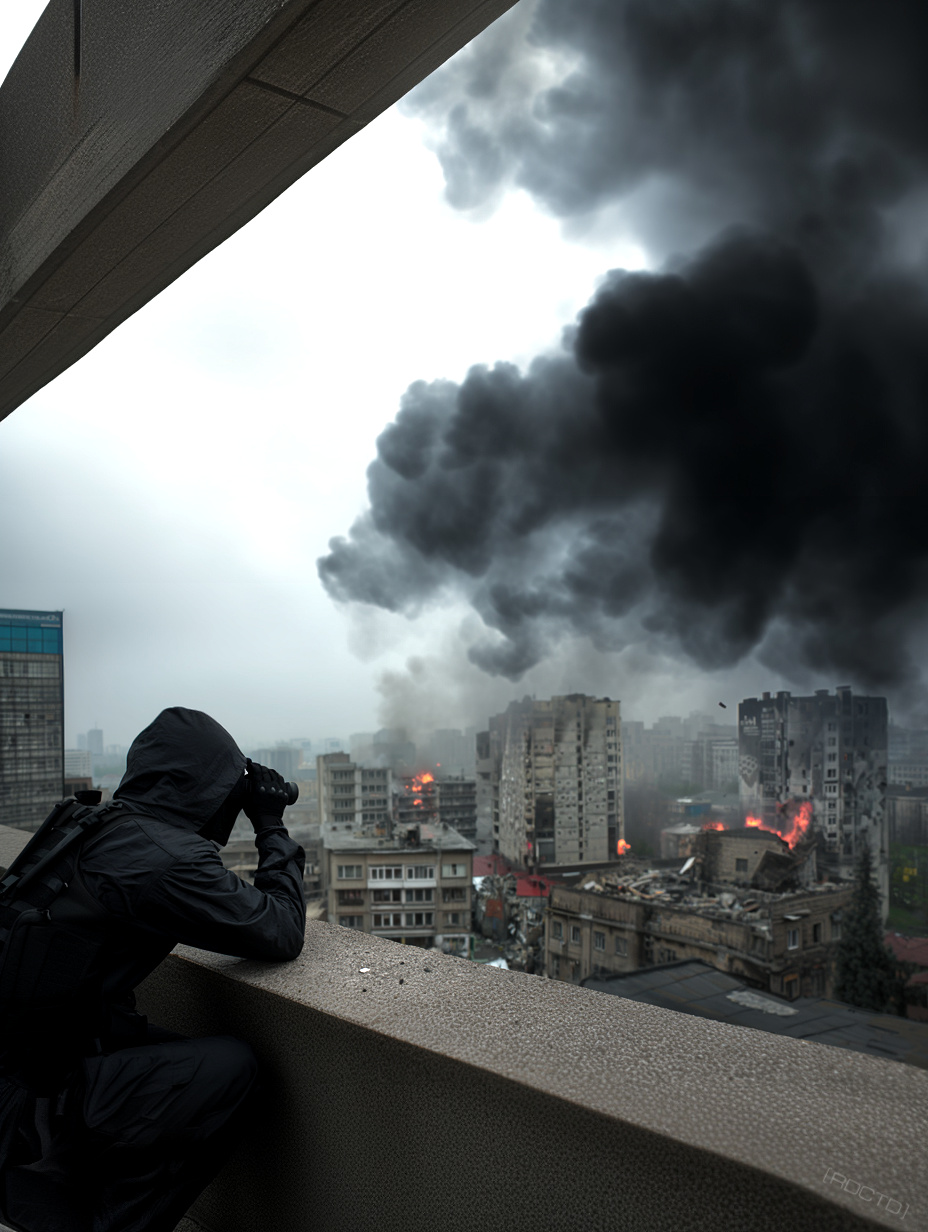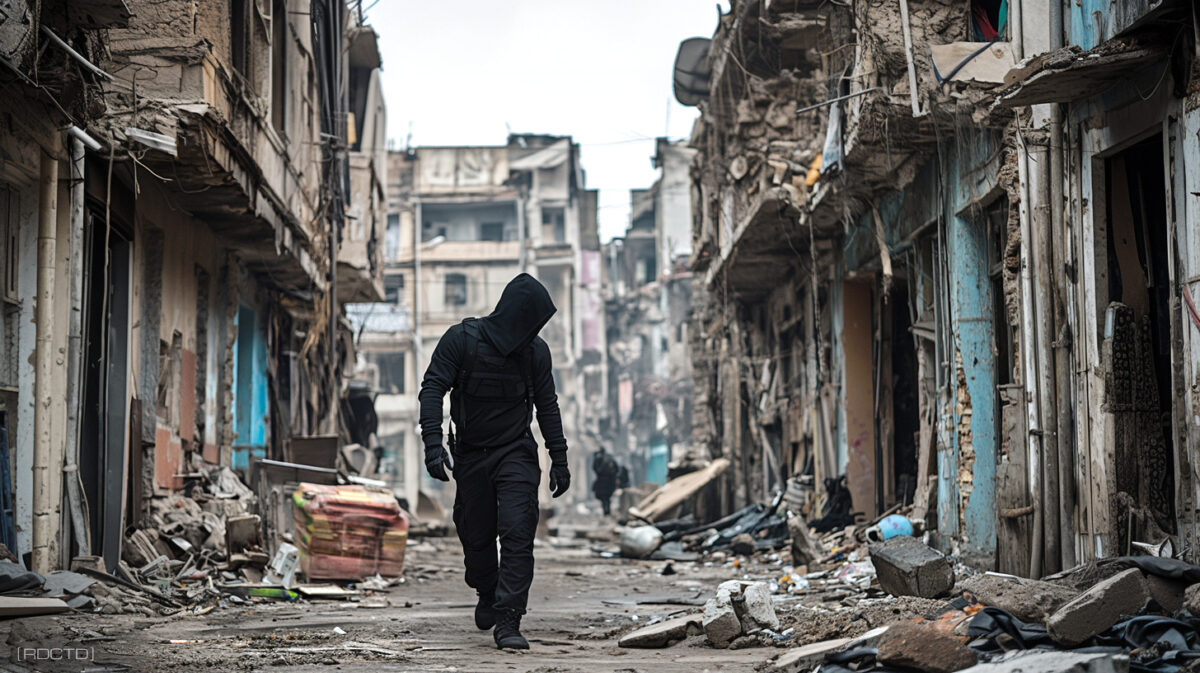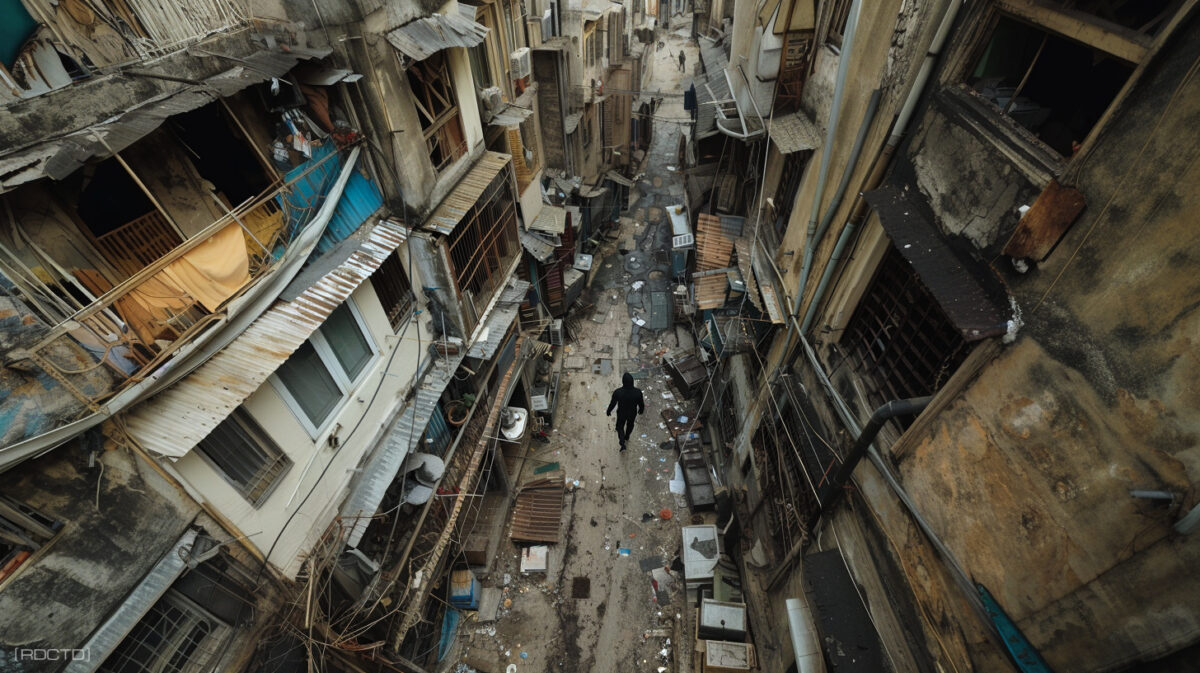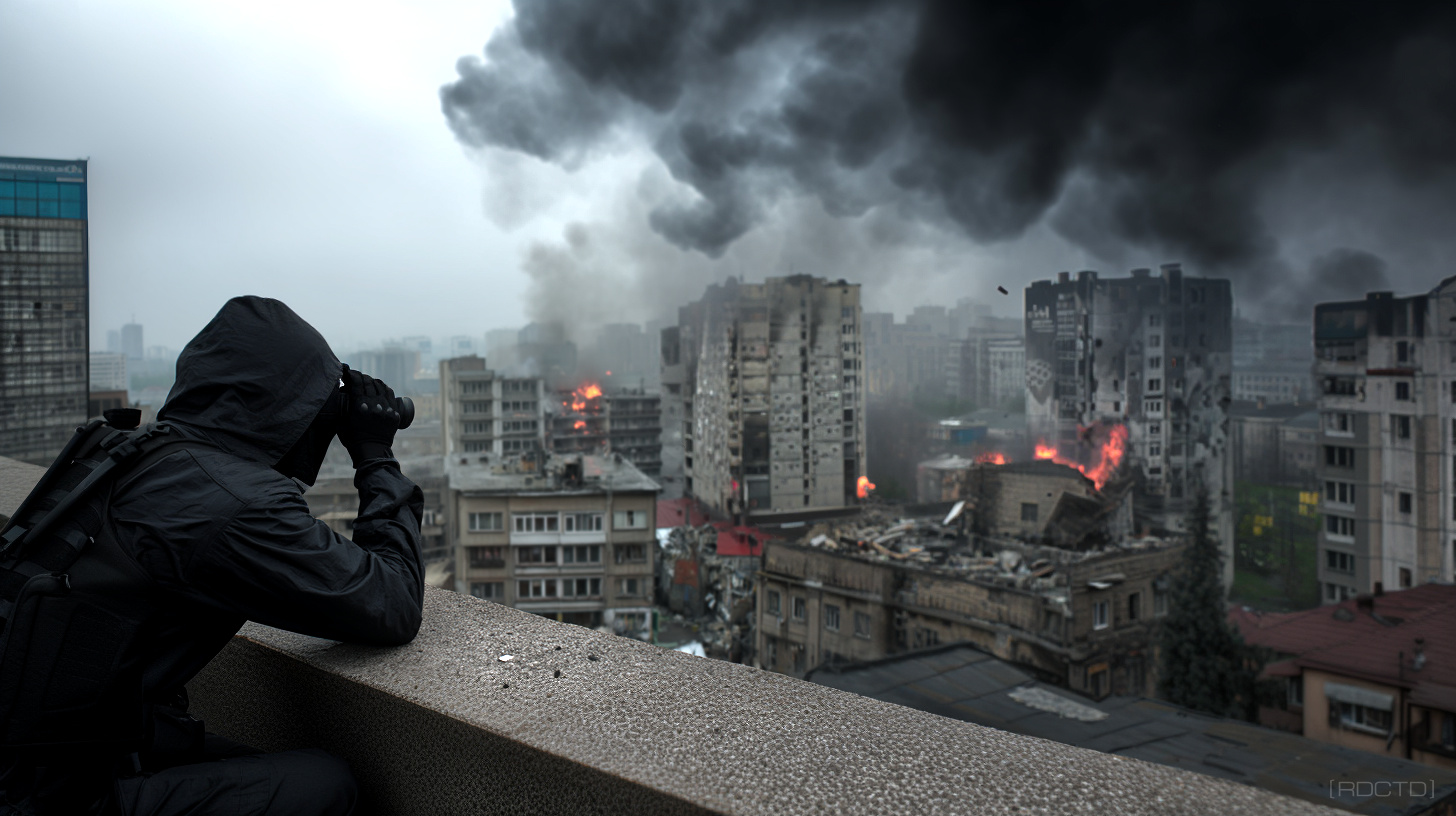 A denied area is a geographic location where an adversary has a high degree of control and the operational effectiveness of allies is restricted due to hostile counterintelligence, surveillance, or political conditions.
A denied area is a geographic location where an adversary has a high degree of control and the operational effectiveness of allies is restricted due to hostile counterintelligence, surveillance, or political conditions. ![]()
The term is used in military, intelligence, and covert operations contexts to describe environments that pose significant risk for clandestine activity. These are places where diplomatic or military influence has no reach, and the adversary maintains tight control over territory, population, and information.
A denied area doesn’t need to catch you in the act. It only needs to notice you don’t fit.
In such “denied” environments, even the smallest operational footprint can trigger a full-scale counterintelligence and localized response. Authoritarian regimes saturated with surveillance systems and warzones controlled by insurgent factions both represent classic examples of denied areas. Environments that demand extreme levels of precision, discretion, and hardened tradecraft simply to survive, much less accomplish operations.
![]()
![]()

![]()
![]()
DENIED AREAS
These locations are not simply high-threat environments, they’re specific systems of active resistance to your presence. Everything from the terrain to the culture to the electrical grid is part of a counterintelligence machine designed to detect, isolate, and eliminate foreign penetration.
The operative who enters a denied area must accept this: your name, your background, your habits, your body language – all of it is a liability unless consciously managed every second of every step.
Definition & Meaning
In special operations, a denied area is one in which access is either extremely difficult or operational activity must be conducted with exceptional levels of security and concealment. The adversary typically maintains effective control over borders, communications, population movement, and surveillance infrastructure. These areas often include regimes with authoritarian governments, high levels of internal security, advanced counterintelligence services, or active warzones controlled by hostile forces.
Denied Area Types
• Geographically Denied: Regions with terrain, climate, or infrastructure challenges that severely limit access or movement, such as mountainous regions, deserts, or heavily urbanized areas.
• Culturally Denied: Where local customs, language, and appearance make an outsider easy to detect.
• Politically Denied: Where official relations are hostile or nonexistent, and visas or legitimate cover are difficult to obtain.
• Militarily Denied: Controlled (martial law, military occupation) or heavily patrolled by adversary military forces.
• Psychologically Denied: Environments shaped by propaganda, fear, or intense ideological loyalty, where the local population may be hostile or likely to report outsiders.
• Digitally Denied: Where internet access is monitored, encrypted communications are flagged, and foreign cyber signatures trigger immediate countermeasures.
• Socially Denied: Where tight-knit communities and rigid social norms make infiltration without raising suspicion nearly impossible.
• Technologically Denied: Saturated with surveillance systems (CCTV, biometric checkpoints, SIGINT collection).
⸻
These layers of denial create a multifaceted threat environment. Operatives must plan for more than just physical access; they need to navigate legal, cultural, and technical barriers, with no support infrastructure and limited margin for error. The complexity of a denied area isn’t just about opposition strength; it’s about the environment’s total hostility to covert presence.
![]()
![]()

![]()
![]()
OPERATIONAL IMPLICATIONS
Conducting any sort of operation in a denied area is one of the most challenging tasks for a covert operative. The risk of compromise, detention, or death is elevated, and standard tradecraft techniques must be adapted to meet the security environment. Operating in a denied area typically utilizes:
Non-Official Cover (NOC)
Operatives often work under the deepest type of cover possible without diplomatic protection. They may pose as businesspeople, students, journalists, or other non-governmental roles.
Operational Isolation
Limited or no physical or digital contact with home-country infrastructure. Communications must be secure, compartmented, and often routed through complex channels.
Advanced Surveillance Evasion
Due to pervasive surveillance, movement patterns must be irregular, contacts minimized, and behavioral discipline strict.
Risk-based Mission Planning
Every action taken inside a denied area must balance operational gain against exposure risk. Entry and exfiltration are high-threat phases requiring precise timing and contingency planning.
Restricted logistics support
Resupply, extraction, and emergency aid are rarely available. Operatives must be fully self-sufficient in terms of equipment, medical care, and sustenance.
Hostile counterintelligence dominance
Security services often operate with sweeping authority and no legal constraints, meaning detainment can lead to rapid exploitation and strategic compromise.
Minimal physical footprint
Operatives must avoid leaving traces; no consistent patterns, no identifiable safehouses, no recoverable devices. Burn phones, clean funds, and disposable assets become standard tools.
Unreliable local assets
Recruiting or running sources inside a denied area is extremely difficult. Locals may be compromised, monitored, or unwilling to cooperate due to fear or loyalty to the regime.
⸻
A denied area forces operatives into a constant state of caution. Decision-making becomes slower, more deliberate, and always weighed against the worst-case outcome. What works in permissive environments simply doesn’t survive the friction of a denied area. Success depends on unshakable discipline, well-executed tradecraft, and the ability to stay invisible under pressure.
![]()
![]()

![]()
![]()
STRATEGIC IMPORTANCE
Understanding and categorizing a denied area is vital in mission planning for both tactical and strategic operations. It informs decisions about:
• Personnel Selection: Determines whether to deploy NOC operatives, local surrogates, or technical collection platforms, based on access limitations and risk thresholds.
• Mission Feasibility and Scope: Defines what can realistically be accomplished in terms of intelligence collection, influence operations, sabotage, or exfiltration under denied conditions.
• Support Architecture: Influences the design of logistical pipelines, communications protocols, and contingency plans; often relying on covert air corridors, black assets, or digital cutouts.
• Target Prioritization: Denied areas frequently contain high-value targets or protected installations that are inaccessible through conventional means, elevating their strategic value.
• Operational Risk Tolerance: Requires a national-level risk assessment, weighing the potential intelligence gain against the likelihood of compromise and geopolitical fallout.
• Exfiltration Planning: Forces planners to invest heavily in escape options, emergency caches, and cross-border networks long before an operation begins.
⸻
Operations inside denied areas often yield high-value intelligence because of the difficulty in penetrating them. Success requires rigorous training, sound judgment, and flawless execution of tradecraft.
![]()
![]()

![]()
![]()
DENIED AREAS TRADECRAFT
Operating inside a denied area is where training is truly tested. There’s no room for sloppy execution, lazy habits, or overreliance on technology. Every move must be calculated, every behavior rehearsed, and every contingency anticipated before the first step across the border. Tradecraft in denied areas differs significantly from permissive environments. Techniques include:
⸻
This level of tradecraft is survival. Mistakes aren’t just setbacks; they’re arrests, burn notices, or body bags. Operatives in denied areas must embrace paranoia, master deception, and trust only in preparation and discipline.
![]()
![]()

![]()
![]()
DENIED AREA EXAMPLES
Each of these denied environments presents a unique configuration of threat; it could be centralized government control, fractured insurgent rule, advanced surveillance infrastructure and so on.
North Korea
Considered one of the most denied environments today due to its extreme internal control, tight borders, and aggressive counterintelligence.
Cold War-era Eastern Bloc
Soviet-controlled states were classic denied areas for Western operatives. Intelligence officers often operated under deep cover or through third-country nationals.
Occupied territories during war
Areas under enemy control, such as Nazi-occupied France during WWII, required resistance networks and covert support structures for Allied operatives.
Iran
Its IRGC-led internal security, digital surveillance capabilities, and hostility toward Western presence make it one of the most tightly controlled modern denied areas.
Syria (Height of the Civil War)
Multiple hostile factions, including ISIS and regime security services, created a multi-layered denial environment with overlapping threats.
Mainland China
While access may seem open through business or academic fronts, its highly integrated surveillance state and pervasive counterintelligence operations classify it as denied for most clandestine activity.
⸻
Effective operations in such areas demand not only advanced tradecraft but also a deep understanding of the political, cultural, and tactical terrain.
![]()
![]()

![]()
![]()
DENIED AREA VS. CONTESTED AREA
A contested area differs from a denied area in that it allows intermittent access or partial control by friendly forces or intelligence assets. While still dangerous, contested areas offer more opportunities for operational activity and usually have less pervasive counterintelligence infrastructure.
In a contested area, the operative may have limited support such as occasional access to safehouses, local allies, or digital communications, though these are never guaranteed. Surveillance may be present but inconsistent, and movements can be masked within broader instability.
These conditions allow for more flexible work and greater room for maneuver, but the line between contested and denied can shift quickly, especially in fluid conflict zones or politically unstable regimes. Operatives must treat contested areas as volatile and be prepared to adapt their posture to a denied-area standard with little warning.
![]()
// The air in a denied area is thicker, not because of the climate, but because you’re breathing under suspicion.
[INTEL : Identifying Escape Routes Anywhere]
[OPTICS : Undisclosed, Eastern Europe]
![[RDCTD]](https://rdctd.pro/wp-content/uploads/RDCTD-Covert-Operative-Tradecraft-Guide-LOGO-tk.png)
![[RDCTD]](https://rdctd.pro/wp-content/uploads/RDCTD-Covert-Operative-Tradecraft-Guide-LOGO-mobile.png)

